Backgrounder
Coronavirus on Chinese Social Media: The 8 Major Trends in Times of the 2019-nCoV Crisis
The 8 main trends defining the online responses to the Wuhan coronavirus on Chinese social media.
Published
4 years agoon

Since the outbreak of the new coronavirus becoming big news in China and around the world, there have been few other topics going trending on Chinese social media than those related to 2019-nCoV. What’s on Weibo gives an overview of the most noteworthy online media trends in China regarding the corona-crisis.
By Manya Koetse, further research and news-gathering by Miranda Barnes
From panic to patriotism, the outbreak of the coronavirus has led to a wide range of different responses from Chinese netizens and online media outlets over the past few weeks.
Although the first reports on the emergence of a pneumonia-like illness in the city of Wuhan came out in late December, it wasn’t until mid-January that the new virus, belonging to the coronavirus family, started dominating the top trending lists on social media in China and beyond.
The hashtag “Nationally Confirmed Cases of New Pneumonia” (#全国确诊新型肺炎病例#) became one of the biggest news-related topics we have ever seen on Weibo, receiving eight billion views by January 25, and reaching a staggering 13,5 billion views by February 2.
As of February 6th, approximately 28,200 cases of the new virus were confirmed, with over 170 cases reported in countries outside of China. The death toll also became much higher than days before, rising to 564. With these numbers, the coronavirus has exceeded the scale of the 2003 SARS outbreak in terms of infected patients.
Along with the quick spread of the new coronavirus across the country, the general mood and direction of the discussions and trends in the Chinese online media environment have also been in constant flux.
At What’s on Weibo, we have been glued to our social media screens, but because editor-in-chief Manya Koetse has been flooded with daily media requests we have not been able to update the site with regular updates (meanwhile, @manyapan did post regular updates on Twitter).
Here, we will highlight some of the main social media trends we spotted during the outbreak of the new Chinese coronavirus, now and over the past weeks.
TREND #1:
Online Backlash against the Eating of Wild Game
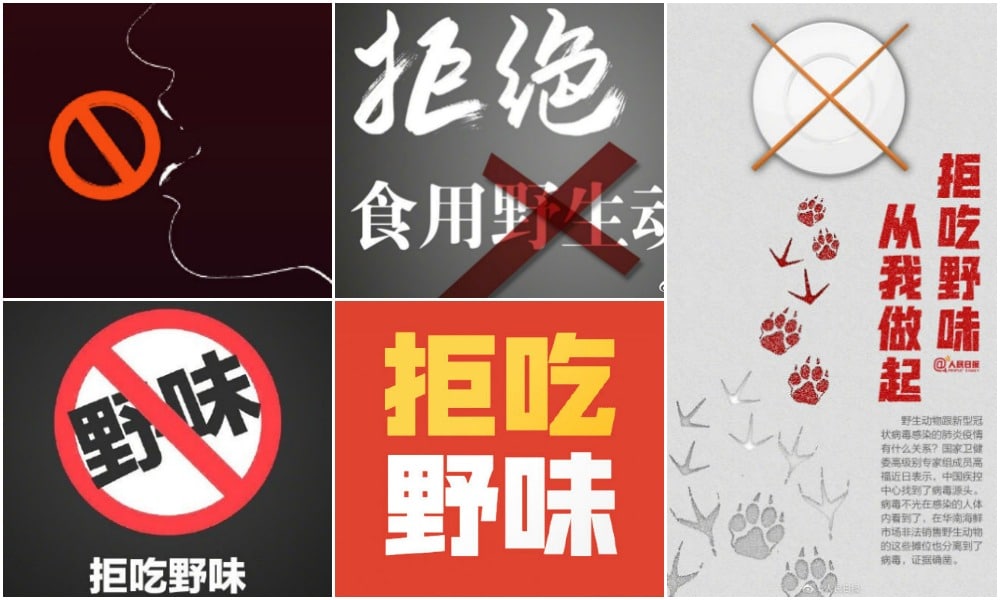
As an online media panic broke out around January 20, when a third person had died of the new Wuhan virus, one of the main trends to come up on Chinese social media was an online backlash against the eating of wild game (as reported here by Jessica Colwell).
The backlash flooded Weibo after the downtown Wuhan Huanan Seafood Wholesale Market (武汉华南海鲜批发市场), selling a wide range of dead and alive wild animals – anything from snakes and crocodiles to rats, hedgehogs or bats, – was identified as the suspected source of the deadly coronavirus outbreak.
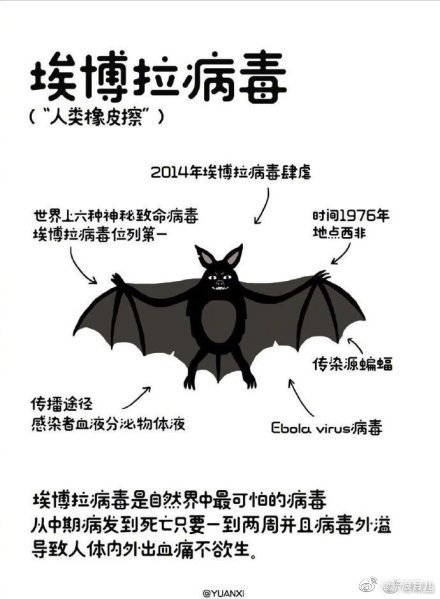
Image posted by Sina Parenting on February 1st.
Since Chinese researchers linked the novel coronavirus (nCoV-2019) to bats, videos and images of bat dishes and people eating bat soon made their rounds on social media.
Many of these videos were actually unrelated to Wuhan, but were used in condemning the practice of eating (illegal/unsafe) wild game in general.
Around January 23, hashtags such as “Support the Banning of Wild Game Markets” (#支持禁绝野味市场#), “Refusing Eating of Wild Game Starts with You” (#拒吃野味从我做起#), “Control Your Mouth, Refuse Wild Game” (#管住嘴拒绝吃野味#) went viral on Weibo.
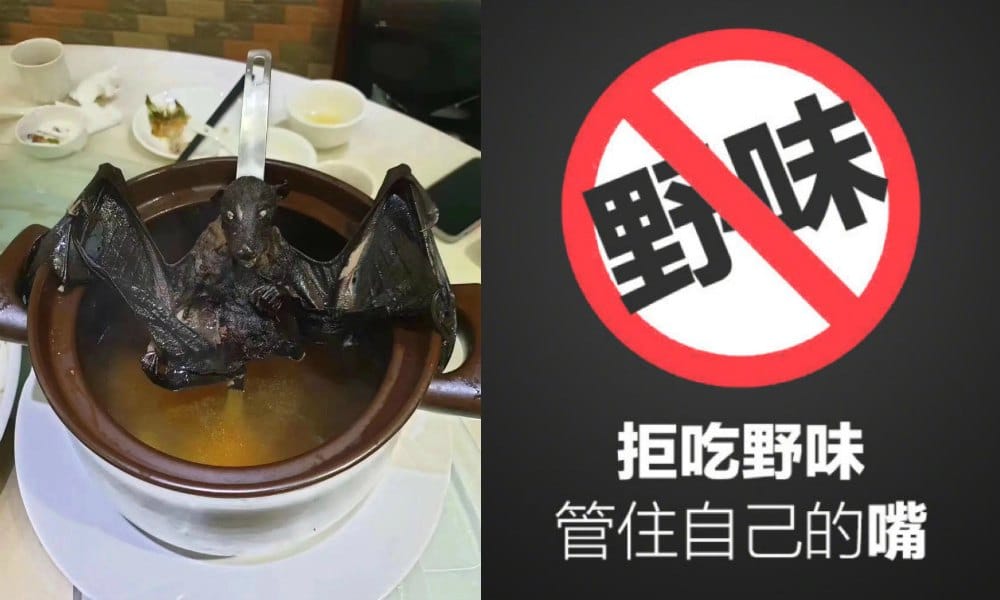
As images or videos of people eating bats or other exotic animals soon also spread to Twitter and other non-Chinese social media, some English-language media labeled them as “xenophobic” or “racist” – ignoring the fact that the anti-wild game storm actually started in the Chinese online media environment.

Online information leaflet spread by People’s Daily, “Resisting the Consumption of Wild Game Starts with Ourselves”
State media outlets such as People’s Daily, for example, played a role in the online dissemination of information against the eating of wild game and actually hosted some of these hashtag pages on Weibo.
The main argument behind the backlash is that those eating (unsafe, illegal) exotic and/or wild animals could risk their own health and that of their community and that what you eat is also your responsibility in keeping others safe.

A news story of a man hunting wild animals for consumption made its rounds on Weibo this week.
The backlash against the eating of wild game and online anger against people hunting or illegally buying wild animals for consumption is still ongoing, with some directing their anger against Wuhan people in specific.
This has also triggered discussions on Weibo about discrimination – not against Chinese people in general, but against Chinese netizens discriminating against Wuhan people or even against people from the Hubei province.
TREND #2:
Fake News and Censorship

Chinese social media platforms such as Weibo are tightly controlled online environments. When certain sensitive topics pop up, such as the anniversary of the Tiananmen protests, the Hong Kong demonstrations in their early phases, or big political events, virtually all related posts and news sharing will sometimes be removed by online censors.
In the wake of the coronavirus outbreak, this was not necessarily the case. From the start, there was a lot of reporting, sharing, and discussion of the virus online.
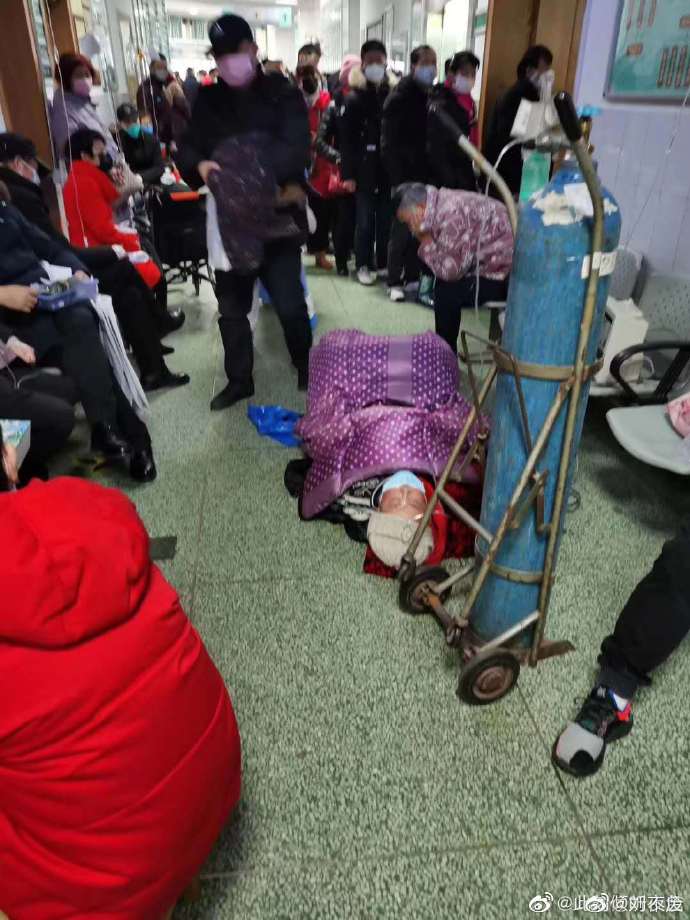
However, there certainly has been ongoing censorship of the topic. This was mainly done in the case of netizens reposting videos of chaotic situations in streets or at hospitals, but also in the case of ‘fake news’ posts (mostly called “starting rumors”).
Posts that could potentially trigger unrest or panic also were censored. One hashtag that made its rounds around January 22 was “Escaping Wuhan” (#逃离武汉#), with people trying to leave Wuhan before the city would go on lockdown. That hashtag page was soon completely removed from Weibo.
The comments sections of some posts reporting on controversial or sensitive news were also completely turned off (such as this report addressing local authorities in Wuhan allegedly taking donated face masks).
Confirmed with my friend that yes she’s been sending me
a video of an alleged Wuhan hospital scene through WeChat, but it’s not coming through in our private #WeChat conversation. pic.twitter.com/UOy5Fhm8Np— Manya Koetse (@manyapan) January 24, 2020
One Weibo user (@魔女小稀), an alleged nurse, posted a video of people in a hospital hallway on January 24th, claiming that “three [dead] bodies” had been lying in a Wuhan hospital for the entire afternoon covered in white sheets without being removed.
The post and the Weibo user were completely removed from the platform on January 25. By that time, however, the video and allegations were already picked up and reposted internationally.


According to Sina News, the post had been completely false; there were no bodies lying around this Wuhan hospital. If there were people covered in white sheets, it was merely people sleeping in the hallway after waiting for a long time.
This is but one of many examples of ‘fake news’ floating around Chinese social media over the past two weeks, with images and videos being placed in a misleading context, people claiming that patient or deceased numbers were much higher than those reported by the official media, and some even bringing up conspiracy theories about the source of the coronavirus (e.g. that the Americans started it, that it leaked from a biolab in Wuhan, etc).
The problem in this issue is, of course, when do we call it ‘fake news’ and when do we call it ‘censorship’? Amid the chaos and uncertainty of the coronavirus outbreak, it is not always easy to separate the two.
This is also a contributing factor in the general distrust in official media reports that clearly surfaced on Weibo over the past weeks. “I don’t believe it,” is a sentence popping up everywhere on social media.
Spreading online “rumors” is a crime under China’s Criminal Law and is punishable by up to seven years in prison. Although some foreign media outlets, such as this one, make it seem as though it is illegal to share fake news about the coronavirus in particular, it is actually illegal in China to share fake news in general.
TREND #3:
Virus Vigilantism

Another trend we noticed on social media during the wake of the coronavirus outbreak is not just a distrust in official media and authorities, but also distrust in fellow citizens.
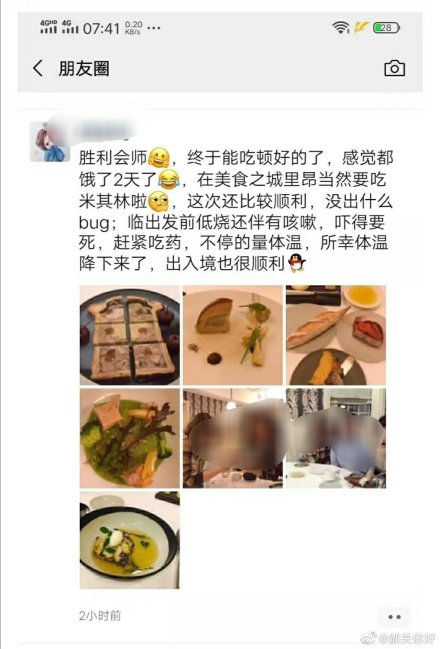
One clear example that blew up on Weibo is that of a young woman from Wuhan who posted about her traveling to France – and enjoying nice food – despite suffering from a fever and cough. Because she took fever reducers, she claimed to have passed airport temperature monitors without issue.
The post sparked great anger among Chinese netizens and triggered the so-called ‘human flesh search engine,’ with people digging into her personal details.
The incident even led to the Chinese embassy in France investigating the matter. The woman turned out not to have been infected with the virus.
But there are many examples of people exposing and doxing those who allegedly are hindering the collective goal of minimizing the risk of a further spreading of the virus, for example by not self-isolating after visiting Wuhan.
There’s also been widespread online condemnation of people stealing tissue paper from public elevators. Many apartment buildings around China now provide a box of tissue paper for hygienic reasons so that people do not need to touch the elevator buttons.
There’s been an ongoing trend of people being exposed on Chinese social media for stealing the tissue boxes now placed in many Chinese apartment elevators (to minimize bacterial levels on elevator buttons in times of #coronavirus). This is but one of many of these videos. pic.twitter.com/A1HAXNZWfQ
— Manya Koetse (@manyapan) February 4, 2020
Surveillance videos of people stealing these boxes have been making their rounds on Weibo and WeChat, such as this lady in an elevator in Chongqing, with thousands of netizens expressing their anger over their behavior – and sometimes naming and shaming them.
TREND #4:
Social Media as a Practical Communication Tool
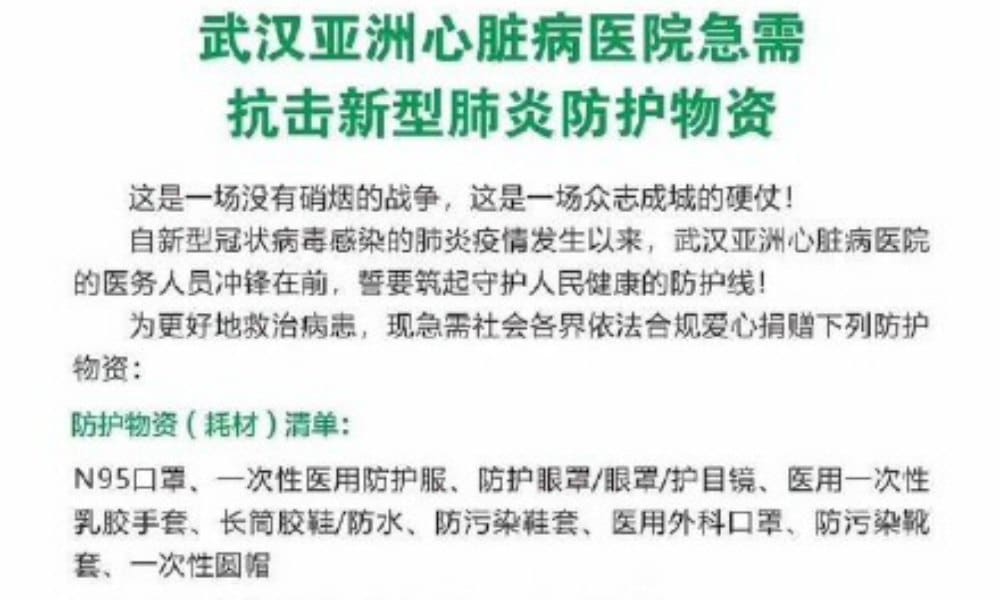
Soon after the scale of the coronavirus outbreak started to become clear, social media platforms such as Weibo were started to be used as practical communication tools for authorities, (medical) organizations, and individuals to spread information or to ask for help.
Social media is now widely used as a practical communication tool for very general matters in the coronavirus crisis (e.g. providing information on how to avoid getting the virus), but also for more specific issues.
FYI the no 1 trending topic of the day is the news that Wuhan hospitals are running out of supplies (hashtag #武汉多家医院物资紧张, 270 million views), hospitals & media are urgently requesting funds & contributions. pic.twitter.com/bSENdSL3kh
— Manya Koetse (@manyapan) January 25, 2020
Various hospitals in Wuhan, for example, spread digital leaflets online summing up their specific shortages in supplies (face masks, surgical gloves, etc), and how people and organizations can contribute.
How Weibo becomes an important communication tool in the handling of #coronavirus. Harbin Center Disease Control PSA: anyone who was on the 20:33 G1278 train carriage 2 from Hankou to Beijing: 3 Wuhan passengers possibly infected, warning passengers to stay indoors if at home. pic.twitter.com/tLPzBRsB5b
— Manya Koetse (@manyapan) January 24, 2020
Another example is how authorities at various times use social media to search for people who were on board of certain trains or where passengers were later diagnosed with the virus.
But we have also seen individuals reaching out through social media. One woman, for example, reached out to netizens online after she and her husband fell ill and needed someone to look after their children.
Through the help of social media, there are now also local volunteers who help taking care of people’s pets while they are unable to return home to feed them.
One of the hashtags increasingly receiving attention online since early February is “Rescuing the Pets Left Behind in Wuhan Homes” (#武汉滞留家中宠物救援#).

Since January 26, Tencent’s WeChat has also opened a special “epidemic supervision” channel within its app where WeChat users can go to get the latest local information about the virus in their area or ask for medical help.
TREND #5:
Propaganda, Pride and Patriotism in Times of Crisis

The outbreak of the coronavirus coincided with the most important holiday of the year in China: the Spring Festival. On Friday, January 24, the CCTV broadcasted its annual Spring Festival Gala (Chunwan), a 4-hour long show that has been airing since 1983. The show is the biggest live TV event in the world, with a viewership of one billion.
The show is usually meticulously planned up to every second – with rehearsals starting months before -, but this year, for the first time ever, it included a segment on the Wuhan coronavirus outbreak. It showed scenes from inside a Wuhan hospital, and the show’s main presenters paid their respects to all the medical workers working day and night.
In light of Wuhan coronavirus outbreak, CCTV puts out a performance paying tribute 🙏 to first line healthcare professionals. This is currently trending as “The Only CCTV Spring Festival Gala Program Without Rehearsal”. #央视春晚 pic.twitter.com/6D89UMlsFw
— yz奥奥 (@midnightbliss01) January 24, 2020
The event became trending on Weibo under the hashtag “For the First Time in History, ‘Chunwan’ Includes a Non-Rehearsed Segment” (#春晚历史上首次没有彩排的片段#)
It was during this time, with twenty million people under travel lockdown, that the sentence “Jiayou Wuhan, Jiayou Zhongguo” (“Come on Wuhan, Come on China”) was propagated by state media and became widely used on Chinese social media.
By now, the hashtag “Go Wuhan!” (#武汉加油#, hosted by Party newspaper People’s Daily) has over 12 billion views on Weibo.

“1.4 billion Chinese salute you”
Medical staff at the dedicated isolation ward of Wuhan’s People’s Hospital wish everyone a Happy New Year, saying: “We’re here, don’t worry [and celebrate Spring Festival]” – a hashtag that’s now propagated online to ease the #coronavirus panic. #有我们在大家安心过年 pic.twitter.com/byWLd8DJ1i
— Manya Koetse (@manyapan) January 24, 2020
Starting from the Spring Festival weekend, Chinese state media began to propagate more positive, patriotic, and nationalistic messages online during the corona crisis, focusing on the unity of China and the dedication and resilience of common Chinese people, with a specific emphasis on medical and army staff.

It is not uncommon, or actually rather common, for Chinese authorities and state media to propagate nationalism in times of hardship (also see our article on online propaganda during the Hong Kong protests).
TREND #6:
Quarantine Boredom: From Panic to Humor
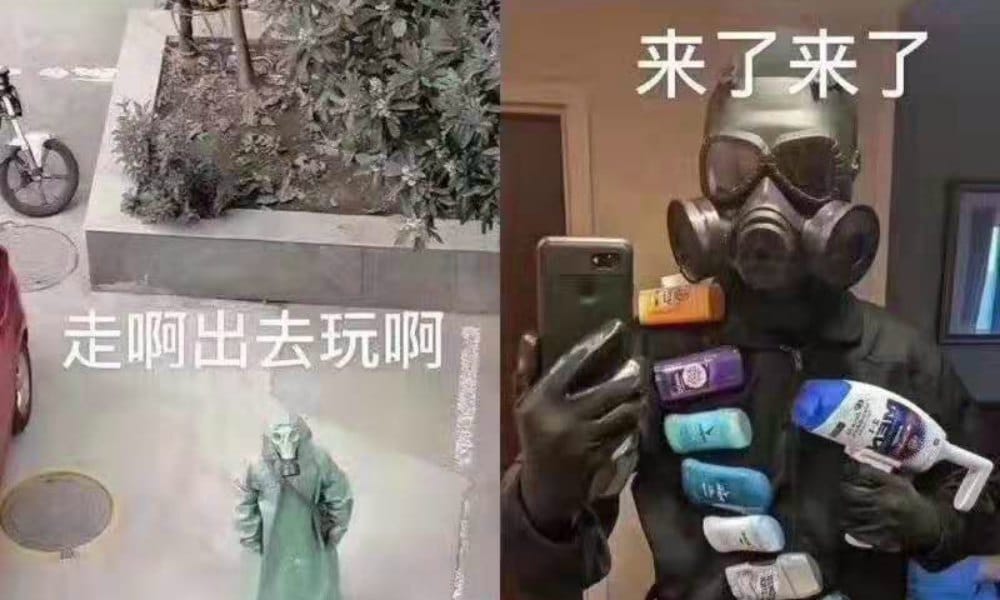
From late January, the first humorous memes and videos starting flooding Chinese social media in light of the coronavirus.
Around January 25, there were over forty confirmed deaths due to the new coronavirus and over 1380 known infected patients. Along with the travel lockdown, most of the major tourist attractions across China had shut down, and driving bans were implemented in the city of Wuhan to restrict people’s movements in efforts to contain the outbreak.
What was supposed to be a time of joy and reunion and entertainment (the Chinese New Year) turned into a time of fear and self-isolation for many families in Wuhan and beyond.
Practically locked up in their homes, some people used humor as a ‘defense mechanism’ in times of coronacrisis.
The videos embedded in the thread below are some examples of people making the most of their times in lockdown.
How to survive staying indoors during #coronavirus lockdown according to these very important videos making their rounds on Chinese social media. Firstly: don’t be afraid to express your feelings and get in touch with your emotions. pic.twitter.com/xd8yj73dtx
— Manya Koetse (@manyapan) January 27, 2020
“What’s the situation in Beijing like now?”
[Posts photo of empty shelves Durex condoms]
“This is the situation in Beijing.”#wechat #coronavirus pic.twitter.com/DdEbLKkhOp
— Manya Koetse (@manyapan) January 28, 2020
But besides the creative solutions of people avoiding boredom inside the home, there were also many memes going around WeChat and Weibo making fun of the extreme measures taken by people and authorities, such as this photo below that was allegedly taken at a station in Yiwu, Zhejiang, saying: “Some people got off the train in Yiwu but thought they’d ended up in Saudi Arabia.”
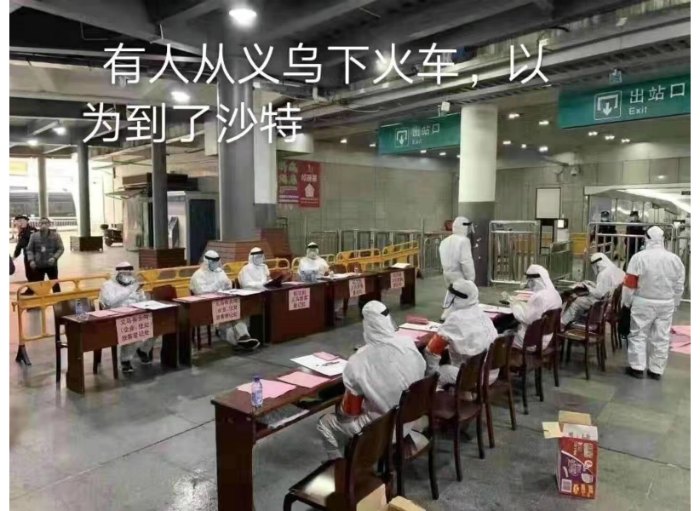
There was also this viral image below of an office canteen where people were self-isolating for safety reasons, saying: “Eating at the cantine of my unit now feels more like taking an exam.”
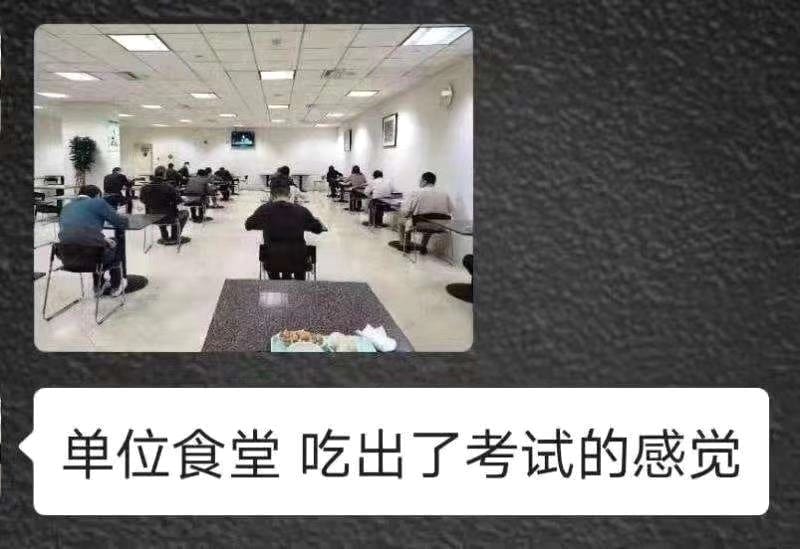
Videos and images of people using sanitary pads, bras, plastic bags, or even fruit to protect their faces due to a scarcity of face masks also continue to make their rounds on social media, with people sometimes mocking neighbors, their friends or family, or even themselves in the extreme and sometimes silly measures they are taking to avoid getting the coronavirus.
We’ve reached a point where people are starting to wear inflatable costumes on the streets to protect themselves against the #coronavirus. According to Chinese media, a medical expert said this is “unnecessary” and that washing hands and wearing face masks will do 😂😂😂 pic.twitter.com/OvhOD76kum
— Manya Koetse (@manyapan) February 6, 2020

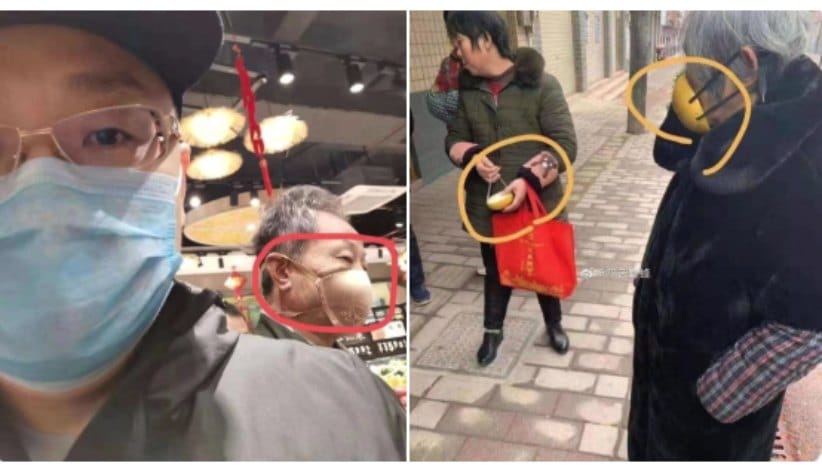
We’ve gotten to a point where I am seriously doubting if this is 100% serious, 100% joke, but I’m going for a bit of both. “We’re out of face masks, so now I use this.” #coronavirus pic.twitter.com/1LVuCFvYUo
— Manya Koetse (@manyapan) February 2, 2020
TREND #7:
Anger against Local Authorities and Illegal Lock-Ins
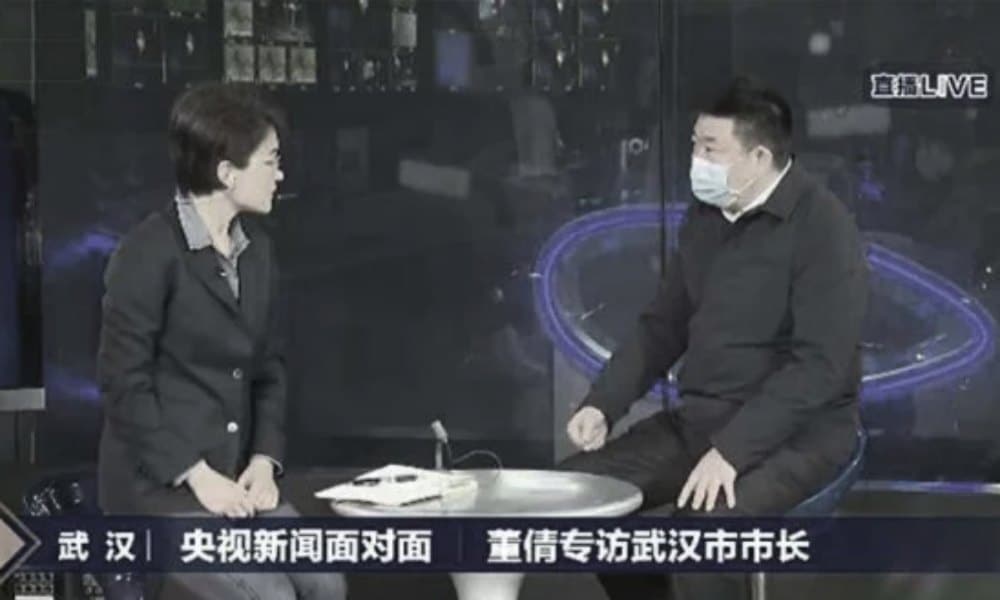
As panic over the spreading coronavirus has become bigger over the past few weeks, the voices criticizing local authorities and organizations for mishandling the situation have also grown louder.
While loud criticism of the central government is usually censored before triggering bigger discussions, there has been ample criticism of provincial, city, and county authorities and organizations – and not without consequence.
In Hubei, local authorities have been criticized for, among others, initially censoring reports of an emerging new illness in December of 2019.
The mayor of Wuhan, Zhou Xianwang, became a major target of netizens’ anger. In late January, Zhou admitted that he had failed in disclosing information in a timely manner and also “did not use effective information” to improve the local government’s work.
The Hubei branch of the Red Cross Society of China (RCSC, 中国红十字会) also received massive criticism online in early February when it turned out that, while the public donated medical supplies and money, most of it remained in the Red Cross warehouse.
On February 4, Chinese state media reported that the Hubei Red Cross deputy director had been removed from office and dismissed from the leading Party members group of the RCSC branch.
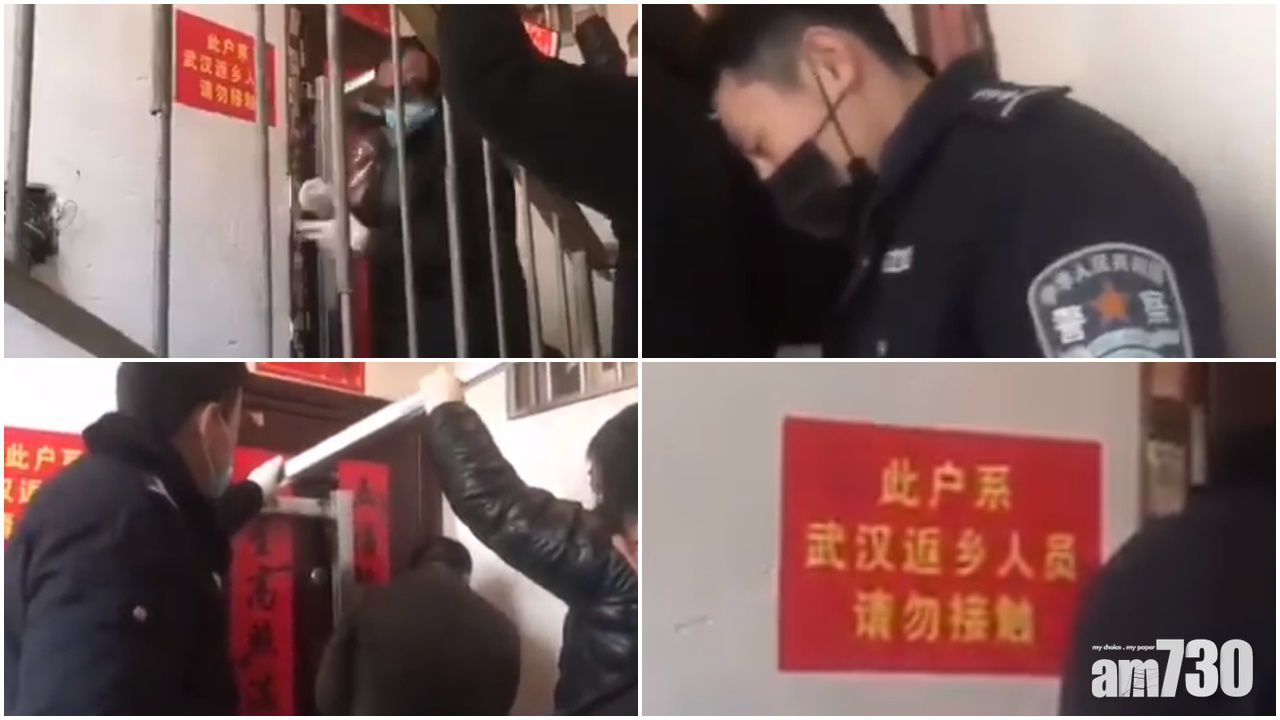
On village and prefecture-level, there has also been public condemnation of how authorities are handling the corona crisis.
Some videos going around social media showed how people, seemingly against their will, were locked up inside their own homes by local authorities after returning from Wuhan (“武汉返乡人员”).
China Youth Daily, the official newspaper of the Communist Youth League of China, also condemned these practices as “illegal” and “inhumane” in an article that has since been deleted.
Through a new WeChat function mentioned earlier in this post, Chinese netizens can now also report any mishandlings of the coronavirus situation.
At the time of writing, there seems to have been some increased censorship, but nevertheless, criticism on local authorities keeps flooding Weibo.
“While people are busy helping themselves and each other, what are the leaders of Hubei and Wuhan doing?”, some people wonder: “Supplies in the hospitals are still scarce, there are still people who are unable to receive help!”
TREND #8:
Corona Panic Buying

It was around January 21st when the coronavirus panic reached a peak in China; a third infected patient had died of the virus the day before, the first cases were confirmed outside of China, and several big travel platforms had started to offer refunds or change flights via Wuhan.
Similar to the SARS outbreak in 2003, news of the coronavirus led to waves of “scare shopping” – a trend that also became very visible on social media.
Medical face masks soon sold out in Chinese pharmacies and on e-commerce platforms: around 80 million face masks were sold on Alibaba’s Taobao platform alone on January 20 and January 21st. Those (online) shops still offering face masks exploited the shortage of face masks, and would only sell them at exorbitant prices.

Twenty dollars for a face mask?
Although Alibaba soon announced it would remove sales of face masks from shops that were selling them at unstable prices, the sales and availability of (disposable) N95 masks is still an issue across China, with netizens complaining about it on Weibo every single day.

Another example of consumer panic followed the Jan 31st reports by two medical research institutions on the TCM oral medicine Shuanghuanglian, which would allegedly be effective in combating the new coronavirus.
Shortly after the reports came out, the herbal remedy sold out in stores across the country.
Chinese state media now warn people against “irrational purchases,” saying that the effectivity of herbal remedies such as Shuanghuanglian is still unsure.
Panic buying is a trend that is not just visible on Chinese social media, it is a trend that also seems to be triggered through social media, with rumors and reports of existing shortages of certain products leading to panic.
A clear example is the February 5 run on toilet paper in Hong Kong after rumors spread that the coronavirus outbreak would lead to insufficient supplies.
OK, Hong Kong, I totally get the surgical mask panic. We all do. But pray tell. what’s up with the run on toilet paper? Are y’all really buying this rumour that China will boycott HK for… Toilet paper ? pic.twitter.com/kb9e0flFyd
— Wang Feng 王丰 (@ulywang) February 5, 2020

As there are still many new developments and news reports coming out concerning the coronavirus, we will keep on publishing more on What’s on Weibo about what’s trending on Chinese social media. (Also read: Distrust and despair on WeChat and Weibo after the death of Wuhan whistleblower Li Wenliang).
If it’s quiet here, please also follow us on Twitter here and here.
By Manya Koetse, additional research and news-gathering by Miranda Barnes
Follow @whatsonweibo
Spotted a mistake or want to add something? Please let us know in comments below or email us. First-time commenters, please be patient – we will have to manually approve your comment before it appears.
©2020 Whatsonweibo. All rights reserved. Do not reproduce our content without permission – you can contact us at info@whatsonweibo.com.
Manya Koetse is the founder and editor-in-chief of whatsonweibo.com. She is a writer, public speaker, and researcher (Sinologist, MPhil) on social trends, digital developments, and new media in an ever-changing China, with a focus on Chinese society, pop culture, and gender issues. She shares her love for hotpot on hotpotambassador.com. Contact at manya@whatsonweibo.com, or follow on Twitter.

Also Read
Backgrounder
“Oppenheimer” in China: Highlighting the Story of Qian Xuesen
Qian Xuesen is a renowned Chinese scientist whose life shares remarkable parallels with Oppenheimer’s.
Published
10 months agoon
September 16, 2023By
Zilan Qian
They shared the same campus, lived in the same era, and both played pivotal roles in shaping modern history while navigating the intricate interplay between science and politics. With the release of the “Oppenheimer” movie in China, the renowned Chinese scientist Qian Xuesen is being compared to the American J. Robert Oppenheimer.
In late August, the highly anticipated U.S. movie Oppenheimer finally premiered in China, shedding light on the life of the famous American theoretical physicist J. Robert Oppenheimer (1904-1967).
Besides igniting discussions about the life of this prominent scientist, the film has also reignited domestic media and public interest in Chinese scientists connected to Oppenheimer and nuclear physics.
There is one Chinese scientist whose life shares remarkable parallels with Oppenheimer’s. This is aerospace engineer and cyberneticist Qian Xuesen (钱学森, 1911-2009). Like Oppenheimer, he pursued his postgraduate studies overseas, taught at Caltech, and played a pivotal role during World War II for the US.
Qian Xuesen is so widely recognized in China that whenever I introduce myself there, I often clarify my last name by saying, “it’s the same Qian as Qian Xuesen’s,” to ensure that people get my name.
Some Chinese blogs recently compared the academic paths and scholarly contributions of the two scientists, while others highlighted the similarities in their political challenges, including the revocation of their security clearances.
The era of McCarthyism in the United States cast a shadow over Qian’s career, and, similar to Oppenheimer, he was branded as a “communist suspect.” Eventually, these political pressures forced him to return to China.
Although Qian’s return to China made his later life different from Oppenheimer’s, both scientists lived their lives navigating the complex dynamics between science and politics. Here, we provide a brief overview of the life and accomplishments of Qian Xuesen.
Departing: Going to America
Qian Xuesen (钱学森, also written as Hsue-Shen Tsien), often referred to as the “father of China’s missile and space program,” was born in Shanghai in 1911,1 a pivotal year marked by a historic revolution that brought an end to the imperial dynasty and gave rise to the Republic of China.
Much like Oppenheimer, who pursued further studies at Cambridge after completing his undergraduate education, Qian embarked on a journey to the United States following his bachelor’s studies at National Chiao Tung University (now Shanghai Jiao Tong University). He spent a year at Tsinghua University in preparation for his departure.
The year was 1935, during the eighth year of the Chinese Civil War and the fourth year of Japan’s invasion of China, setting the backdrop for his academic pursuits in a turbulent era.

Qian in his office at Caltech (image source).
One year after arriving in the U.S., Qian earned his master’s degree in aeronautical engineering from the Massachusetts Institute of Technology (MIT). Three years later, in 1939, the 27-year-old Qian Xuesen completed his PhD at the California Institute of Technology (Caltech), the very institution where Oppenheimer had been welcomed in 1927. In 1943, Qian solidified his position in academia as an associate professor at Caltech. While at Caltech, Qian helped found NASA’s Jet Propulsion Laboratory.
When World War II began, while Oppenheimer was overseeing the Manhattan Project’s efforts to assist the U.S. in developing the atomic bomb, Qian actively supported the U.S. government. He served on the U.S. government’s Scientific Advisory Board and attained the rank of lieutenant colonel.

The first meeting of the US Department of the Air Force Scientific Advisory Board in 1946. The predecessor, the Scientific Advisory Group, was founded in 1944 to evaluate the aeronautical programs and facilities of the Axis powers of World War II. Qian can be seen standing in the back, the second on the left (image source).
After the war, Qian went to teach at MIT and returned to Caltech as a full-time professor in 1949. During that same year, Mao Zedong proclaimed the establishment of the People’s Republic of China (PRC). Just one year later, the newly-formed nation became involved in the Korean War, and China fought a bloody battle against the United States.
Red Scare: Being Labeled as a Communist
Robert Oppenheimer and Qian Xuesen both had an interest in Communism even prior to World War II, attending communist gatherings and showing sympathy towards the Communist cause.
Qian and Oppenheimer may have briefly met each other through their shared involvement in communist activities. During his time at Caltech, Qian secretly attended meetings with Frank Oppenheimer, the brother of J. Robert Oppenheimer (Monk 2013).
However, it was only after the war that their political leanings became a focal point for the FBI.
Just as the FBI accused Oppenheimer of being an agent of the Soviet Union, they quickly labeled Qian as a subversive communist, largely due to his Chinese heritage. While the government did not succeed in proving that Qian had communist ties with China during that period, they did ultimately succeed in portraying Qian as a communist affiliated with China a decade later.
During the transition from the 1940s to the 1950s, the Cold War was underway, and the anti-communist witch-hunts associated with the McCarthy era started to intensify (BBC 2020).
In 1950, the Korean War erupted, with the People’s Republic of China (PRC) joining North Korea in the conflict against South Korea, which received support from the United States. It was during this tumultuous period that the FBI officially accused Qian of communist sympathies in 1950, leading to the revocation of his security clearance despite objections from Qian’s colleagues. Four years later, in 1954, Robert Oppenheimer went through a similar process.

The 1950’s security hearing of Qian (second left). (Image source).
After losing his security clearance, Qian began to pack up, saying he wanted to visit his aging parents back home. Federal agents seized his luggage, which they claimed contained classified materials, and arrested him on suspicion of subversive activity. Although Qian denied any Communist leanings and rejected the accusation, he was detained by the government in California and spent the next five years under house arrest.
Five years later, in 1955, two years after the end of the Korean War, Qian was sent home to China as part of an apparent exchange for 11 American airmen who had been captured during the war. He told waiting reporters he “would never step foot in America again,” and he kept his promise (BBC 2020).

A letter from the US Immigration and Naturalization Service to Qian Xuesen, dated August 4, 1955, in which he was notified he was allowed to leave the US. The original copy is owned by Qian Xuesen Library of Shanghai Jiao Tong University, where the photo was taken. (Caption and image via wiki).
Dan Kimball, who was the Secretary of the US Navy at the time, expressed his regret about Qian’s departure, reportedly stating, “I’d rather shoot him dead than let him leave America. Wherever he goes, he equals five divisions.” He also stated: “It was the stupidest thing this country ever did. He was no more a communist than I was, and we forced him to go” (Perrett & Bradley, 2008).
Kimball may have foreseen the unfolding events accurately. After his return to China, Qian did indeed assume a pivotal role in enhancing China’s military capabilities, possibly surpassing the potency of five divisions. The missile programme that Qian helped develop in China resulted in weapons which were then fired back on America, including during the 1991 Gulf War (BBC 2020).
Returning: Becoming a National Hero
The China that Qian Xuesen had left behind was an entirely different China than the one he returned to. China, although having relatively few experts in the field, was embracing new possibilities and technologies related to rocketry and space exploration.
Within less than a month of his arrival, Qian was welcomed by the then Vice Prime Minister Chen Yi, and just four months later, he had the honor of meeting Chairman Mao himself.

Qian and Mao (image source).
In China, Qian began a remarkably successful career in rocket science, with great support from the state. He not only assumed leadership but also earned the distinguished title of the “father” of the Chinese missile program, instrumental in equipping China with Dongfeng ballistic missiles, Silkworm anti-ship missiles, and Long March space rockets.
Additionally, his efforts laid the foundation for China’s contemporary surveillance system.
By now, Qian has become somewhat of a folk hero. His tale of returning to China despite being thwarted by the U.S. government has become like a legendary narrative in China: driven by unwavering patriotism, he willingly abandoned his overseas success, surmounted formidable challenges, and dedicated himself to his motherland.
Throughout his lifetime, Qian received numerous state medals in recognition of his work, establishing him as a nationally celebrated intellectual. From 1989 to 2001, the state-launched public movement “Learn from Qian Xuesen” was promoted throughout the country, and by 2001, when Qian turned 90, the national praise for him was on a similar level as that for Deng Xiaoping in the decade prior (Wang 2011).
Qian Xuesen remains a celebrated figure. On September 3rd of this year, a new “Qian Xuesen School” was established in Wenzhou, Zhejiang Province, becoming the sixth high school bearing the scientist’s name since the founding of the first one only a year ago.

In 2017, the play “Qian Xuesen” was performed at Qian’s alma mater, Shanghai Jiaotong University. (Image source.)
Qian Xuesen’s legacy extends well beyond educational institutions. His name frequently appears in the media, including online articles, books, and other publications. There is the Qian Xuesen Library and a museum in Shanghai, containing over 70,000 artefacts related to him. Qian’s life story has also been the inspiration for a theater production and a 2012 movie titled Hsue-Shen Tsien (钱学森).2
Unanswered Questions
As is often the case when people are turned into heroes, some part of the stories are left behind while others are highlighted. This holds true for both Robert Oppenheimer and Qian Xuesen.
The Communist Party of China hailed Qian as a folk hero, aligning with their vision of a strong, patriotic nation. Many Chinese narratives avoid the debate over whether Qian’s return was linked to problems and accusations in the U.S., rather than genuine loyalty to his homeland.
In contrast, some international media have depicted Qian as a “political opportunist” who returned to China due to disillusionment with the U.S., also highlighting his criticism of “revisionist” colleagues during the Cultural Revolution and his denunciation of the 1989 student demonstrations.
Unlike the image of a resolute loyalist favored by the Chinese public, Qian’s political ideology was, in fact, not consistently aligned, and there were instances where he may have prioritized opportunity over loyalty at different stages of his life.
Qian also did not necessarily aspire to be a “flawless hero.” Upon returning to China, he declined all offers to have his biography written for him and refrained from sharing personal information with the media. Consequently, very little is known about his personal life, leaving many questions about the motivations driving him, and his true political inclinations.

The marriage photo of Qian and Jiang. (Image source).
We do know that Qian’s wife, Jiang Ying (蒋英), had a remarkable background. She was of Chinese-Japanese mixed race and was the daughter of a prominent military strategist associated with Chiang Kai-shek. Jiang Ying was also an accomplished opera singer and later became a professor of music and opera at the Central Conservatory of Music in Beijing.
Just as with Qian, there remain numerous unanswered questions surrounding Oppenheimer, including the extent of his communist sympathies and whether these sympathies indirectly assisted the Soviet Union during the Cold War.
Perhaps both scientists never imagined they would face these questions when they first decided to study physics. After all, they were scientists, not the heroes that some narratives portray them to be.
Also read:
■ Farewell to a Self-Taught Master: Remembering China’s Colorful, Bold, and Iconic Artist Huang Yongyu
■ “His Name Was Mao Anying”: Renewed Remembrance of Mao Zedong’s Son on Chinese Social Media
By Zilan Qian
Follow @whatsonweibo
1 Some sources claim that Qian was born in Hangzhou, while others say he was born in Shanghai with ancestral roots in Hangzhou.
2The Chinese character 钱 is typically romanized as “Qian” in Pinyin. However, “Tsien” is a romanization in Wu Chinese, which corresponds to the dialect spoken in the region where Qian Xuesen and his family have ancestral roots.
This article has been edited for clarity by Manya Koetse
References (other sources hyperlinked in text)
BBC. 2020. “Qian Xuesen: The man the US deported – who then helped China into space.” BBC.com, 27 October https://www.bbc.com/news/stories-54695598 [9.16.23].
Monk, Ray. 2013. Robert Oppenheimer: A Life inside the Center, First American Edition. New York: Doubleday.
Perrett, Bradley, and James R. Asker. 2008. “Person of the Year: Qian Xuesen.” Aviation Week and Space Technology 168 (1): 57-61.
Wang, Ning. 2011. “The Making of an Intellectual Hero: Chinese Narratives of Qian Xuesen.” The China Quarterly, 206, 352-371. doi:10.1017/S0305741011000300
Get the story behind the hashtag. Subscribe to What’s on Weibo here to receive our newsletter and get access to our latest articles:
Spotted a mistake or want to add something? Please let us know in comments below or email us. First-time commenters, please be patient – we will have to manually approve your comment before it appears.
©2023 Whatsonweibo. All rights reserved. Do not reproduce our content without permission – you can contact us at info@whatsonweibo.com.
Backgrounder
Farewell to a Self-Taught Master: Remembering China’s Colorful, Bold, and Iconic Artist Huang Yongyu
Renowned Chinese artist and the creator of the ‘Blue Rabbit’ zodiac stamp Huang Yongyu has passed away at the age of 98. “I’m not afraid to die. If I’m dead, you may tickle me and see if I smile.”
Published
1 year agoon
June 15, 2023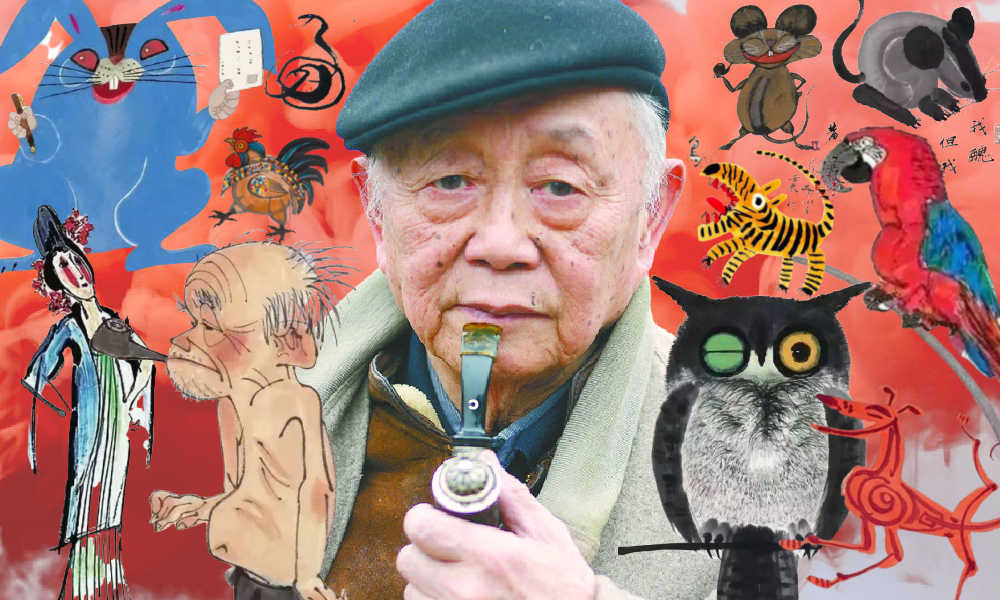
The famous Chinese painter, satirical poet, and cartoonist Huang Yongyu has passed away. Born in 1924, Huang endured war and hardship, yet never lost his zest for life. When his creativity was hindered and his work was suppressed during politically tumultuous times, he remained resilient and increased “the fun of living” by making his world more colorful.
He was a youthful optimist at old age, and will now be remembered as an immortal legend. The renowned Chinese painter and stamp designer Huang Yongyu (黄永玉) passed away on June 13 at the age of 98. His departure garnered significant attention on Chinese social media platforms this week.
On Weibo, the hashtag “Huang Yongyu Passed Away” (#黄永玉逝世#) received over 160 million views by Wednesday evening.
Huang was a member of the China National Academy of Painting (中国国家画院) as well as a Professor at the Central Academy of Fine Arts (中央美术学院).
Huang Yongyu is widely recognized in China for his notable contribution to stamp design, particularly for his iconic creation of the monkey stamp in 1980. Although he designed a second monkey stamp in 2016, the 1980 stamp holds significant historical importance as it marked the commencement of China Post’s annual tradition of releasing zodiac stamps, which have since become highly regarded and collectible items.
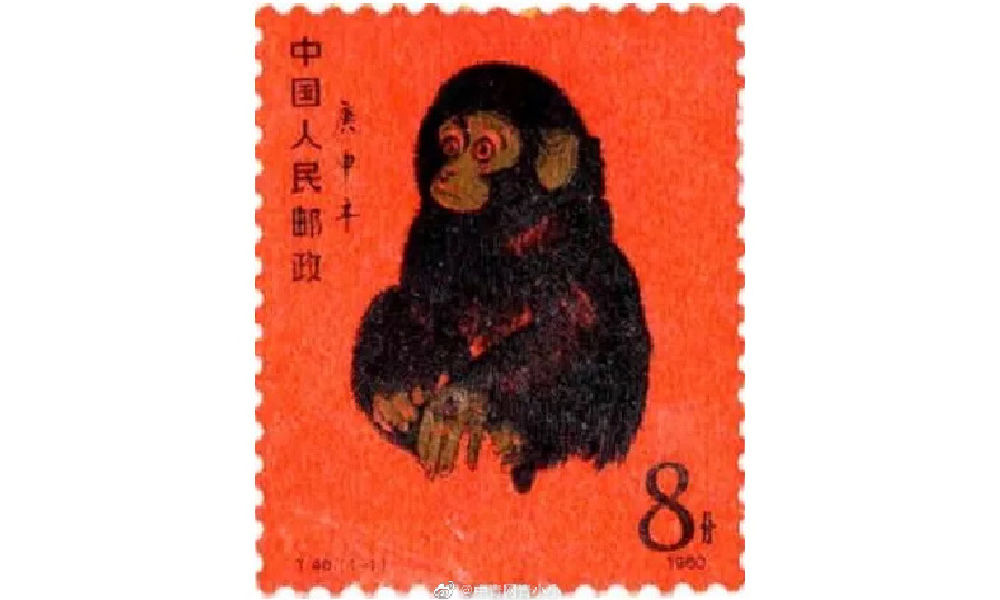
Huang’s famous money stamp that was issued by China Post in 1980.
The monkey stamp designed by Huang Yongyu has become a cherished collector’s item, even outside of China. On online marketplaces like eBay, individual stamps from this series are being sold for approximately $2000 these days.
Huang Yongyu’s latest most famous stamp was this year’s China Post zodiac stamp. The stamp, a blue rabbit with red eyes, caused some online commotion as many people thought it looked “horrific.”
Some thought the red-eyed blue rabbit looked like a rat. Others thought it looked “evil” or “monster-like.” There were also those who wondered if the blue rabbit looked so wild because it just caught Covid.
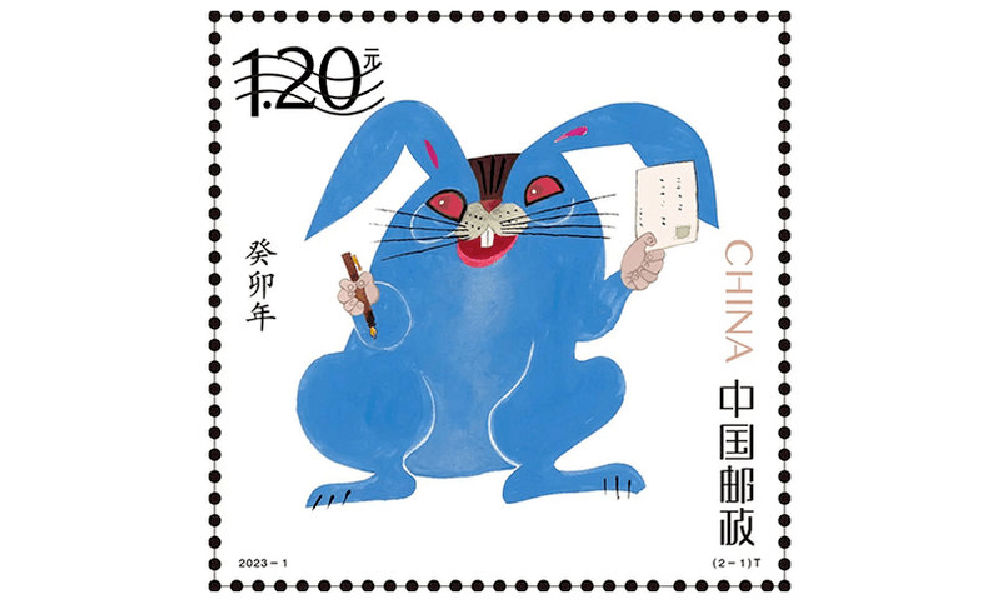
Huang’s (in)famous blue rabbit stamp.
Nevertheless, many people lined up at post offices for the stamps and they immediately sold out.
In light of the controversy, Huang Yongyu spoke about the stamps in a livestream in January of 2023. The 98-year-old artist claimed he had simply drawn the rabbit to spread joy and celebrate the new year, stating, “Painting a rabbit stamp is a happy thing. Everyone could draw my rabbit. It’s not like I’m the only one who can draw this.”
Huang’s response also went viral, with one Weibo hashtag dedicated to the topic receiving over 12 million views (#蓝兔邮票设计者直播回应争议#) at the time. Those defending Huang emphasized how it was precisely his playful, light, and unique approach to art that has made Huang’s work so famous.
A Self-Made Artist
“I’m ugly, but my mum likes me”
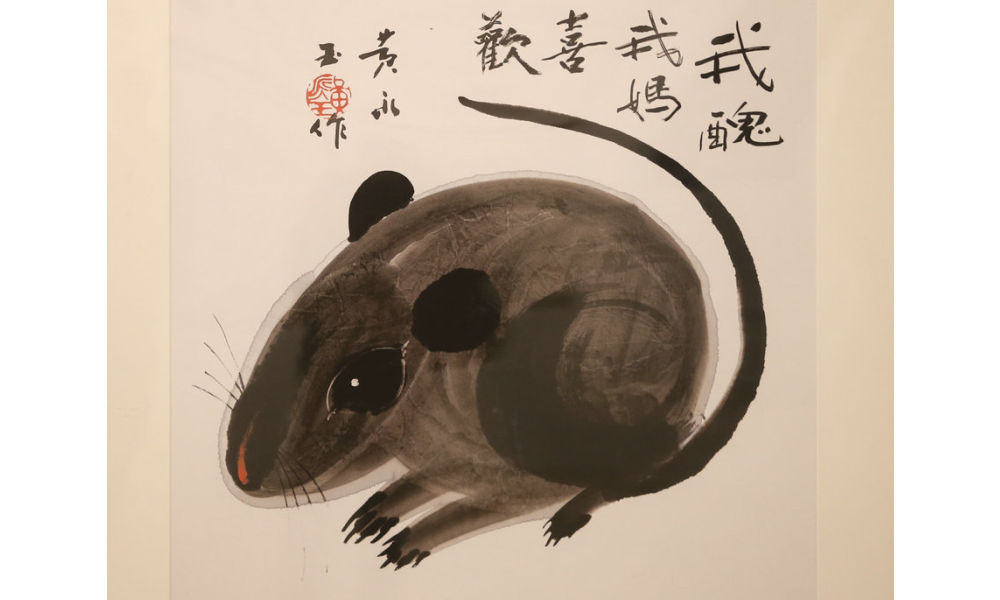
‘Ugly Mouse’ by Huang Yongyu [Image via China Daily].
Huang Yongyu was born on August 9, 1924, in Hunan’s Chengde as a native of the Tujia ethnic group.
He was born into an extraordinary family. His grandfather, Huang Jingming (黄镜铭), worked for Xiong Xiling (熊希齡), who would become the Premier of the Republic of China. His first cousin and lifelong friend was the famous Chinese novelist Shen Congwen (沈从文). Huang’s father studied music and art and was good at drawing and playing the accordion. His mother graduated from the Second Provincial Normal School and was the first woman in her county to cut her hair short and wear a short skirt (CCTV).
Born in times of unrest and poverty, Huang never went to college and was sent away to live with relatives at the age of 13. His father would die shortly after, depriving him of a final goodbye. Huang started working in various places and regions, from porcelain workshops in Dehua to artisans’ spaces in Quanzhou. At the age of 16, Huang was already earning a living as a painter and woodcutter, showcasing his talents and setting the foundation for his future artistic pursuits.
When he was 22, Huang married his first girlfriend Zhang Meixi (张梅溪), a general’s daughter, with whom he shared a love for animals. He confessed his love for her when they both found themselves in a bomb shelter after an air-raid alarm.

Huang and Zhang Meixi [163.com]
In his twenties, Huang Yongyu emerged as a sought-after artist in Hong Kong, where he had relocated in 1948 to evade persecution for his left-wing activities. Despite achieving success there, he heeded Shen Congwen’s advice in 1953 and moved to Beijing. Accompanied by his wife and their 7-month-old child, Huang took on a teaching position at the esteemed Central Academy of Fine Arts (中央美术学院).
The couple raised all kinds of animals at their Beijing home, from dogs and owls to turkeys and sika deers, and even monkeys and bears (Baike).
Throughout Huang’s career, animals played a significant role, not only reflecting his youthful spirit but also serving as vehicles for conveying satirical messages.
One recurring motif in his artwork was the incorporation of mice. In one of his famous works, a grey mouse is accompanied by the phrase ‘I’m ugly, but my mum likes me’ (‘我丑,但我妈喜欢’), reinforcing the notion that regardless of our outward appearance or circumstances, we remain beloved children in the eyes of our mothers.
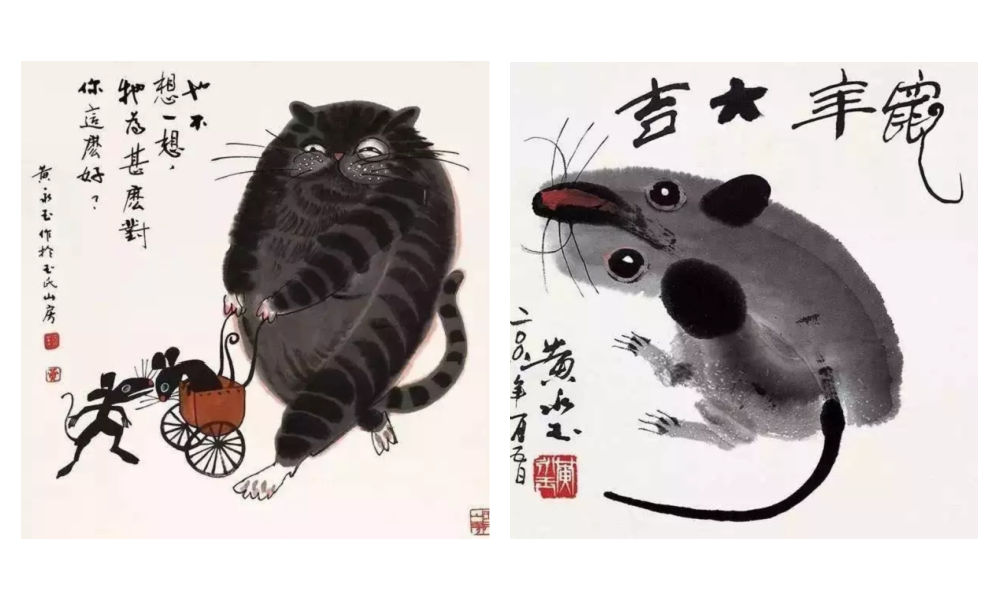
As a teacher, Huang liked to keep his lessons open-minded and he, who refused to join the Party himself, stressed the importance of art over politics. He would hold “no shirt parties” in which his all-male studio students would paint in an atmosphere of openness and camaraderie during hot summer nights (Andrews 1994, 221; Hawks 2017, 99).
By 1962, creativity in the classroom was limited and there were far more restrictions to what could and could not be created, said, and taught.
Bright Colors in Dark Times
“Strengthen my resolve and increase the fun of living”
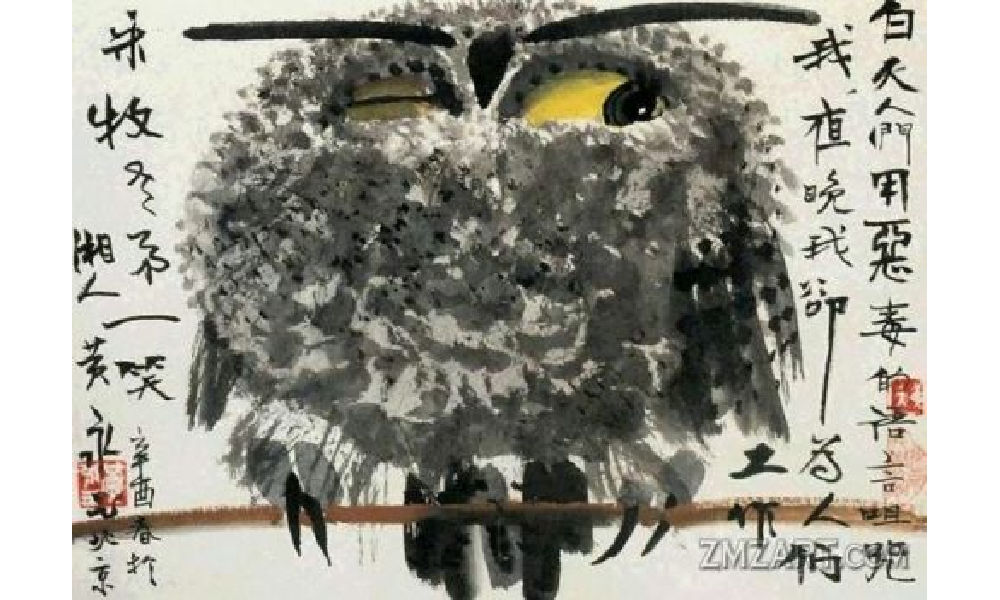
Huang Yongyu’s winking owl, 1973, via Wikiart.
In 1963, Huang was sent to the countryside as part of the “Four Cleanups” movement (四清运动, 1963-1966). Although Huang cooperated with the requirement to attend political meetings and do farm work, he distanced himself from attempts to reform his thinking. In his own time, and even during political meetings, he would continue to compose satirical and humorous pictures and captions centered around animals, which would later turn into his ‘A Can of Worms’ series (Hawks 2017, 99; see Morningsun.org).
Three years later, at the beginning of the Cultural Revolution, many Chinese major artists, including Huang, were detained in makeshift jails called ‘niupeng‘ (牛棚), cowsheds. Huang’s work was declared to be counter-revolutionary, and he was denounced and severely beaten. Despite the difficult circumstances, Huang’s humor and kindness would remind his fellow artist prisoners of the joy of daily living (2017, 95-96).
After his release, Huang and his family were relocated to a cramped room on the outskirts of Beijing. The authorities, thinking they could thwart his artistic pursuits, provided him with a shed that had only one window, which faced a neighbor’s wall. However, this limitation didn’t deter Huang. Instead, he ingeniously utilized vibrant pigments that shone brightly even in the dimly lit space.
During this time, he also decided to make himself an “extra window” by creating an oil painting titled “Eternal Window” (永远的窗户). Huang later explained that the flower blossoms in the paining were also intended to “strengthen my resolve and increase the fun of living” (Hawks 2017, 4; 100-101).

Huang Yongyu’s Eternal Window [Baidu].
In 1973, during the peak of the Cultural Revolution, Huang painted his famous winking owl. The calligraphy next to the owl reads: “During the day people curse me with vile words, but at night I work for them” (“白天人们用恶毒的语言诅咒我,夜晚我为他们工作”) (Matthysen 2021, 165).
The painting was seen as a display of animosity towards the regime, and Huang got in trouble for it. Later on in his career, however, Huang would continue to paint owls. In 1977, when the Cultural Revolution had ended, Huang Yongyu painted other owls to ridicules his former critics (2021, 174).
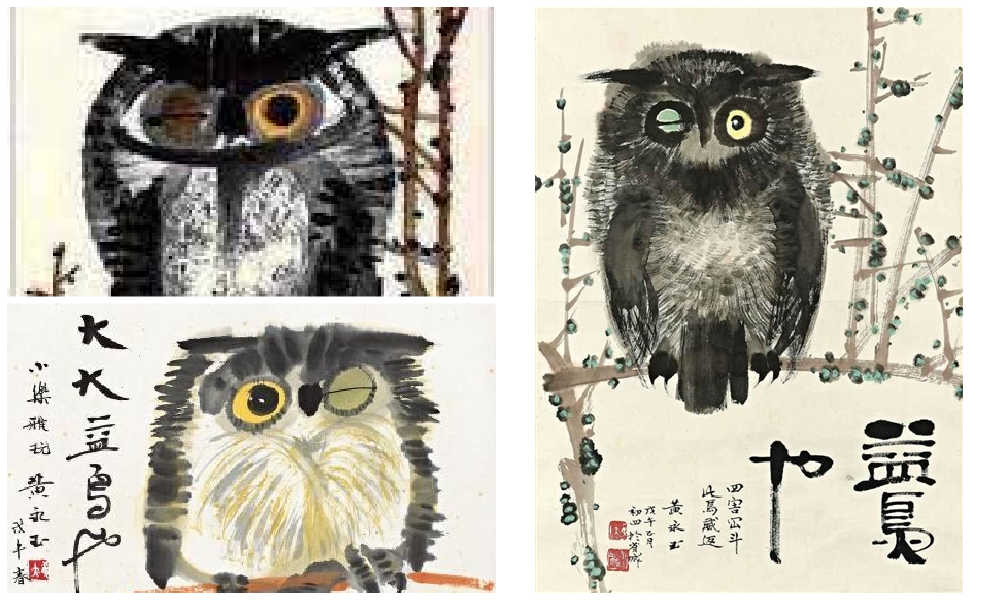
According to art scholar Shelly Drake Hawks, Huang Yongyu employed animals in his artwork to satirize the realities of life under socialism. This approach can be loosely compared to George Orwell’s famous novel Animal Farm.
However, Huang’s artistic style, vibrant personal life, and boundary-pushing work ethic also draw parallels to Picasso. Like Picasso, Huang embraced a colorful life, adopted an innovative approach to art, and challenged artistic norms.
An Optimist Despite All Hardships
“Quickly come praise me, while I’m still alive”

Huang Yongyu will be remembered in China with love and affection for numerous reasons. Whether it is his distinctive artwork, his mischievous smile and trademark pipe, his unwavering determination to follow his own path despite the authorities’ expectations, or his enduring love for his wife of over 75 years, there are countless aspects to appreciate and admire about Huang.
One things that is certainly admirable is how he was able to maintain a youthful and joyful attitude after suffering many hardships and losing so many friends.
“An intriguing soul. Too wonderful to describe,” one Weibo commenter wrote about Huang, sharing pictures of Huang Yongyu’s “Scenes of Pooping” (出恭图) work.
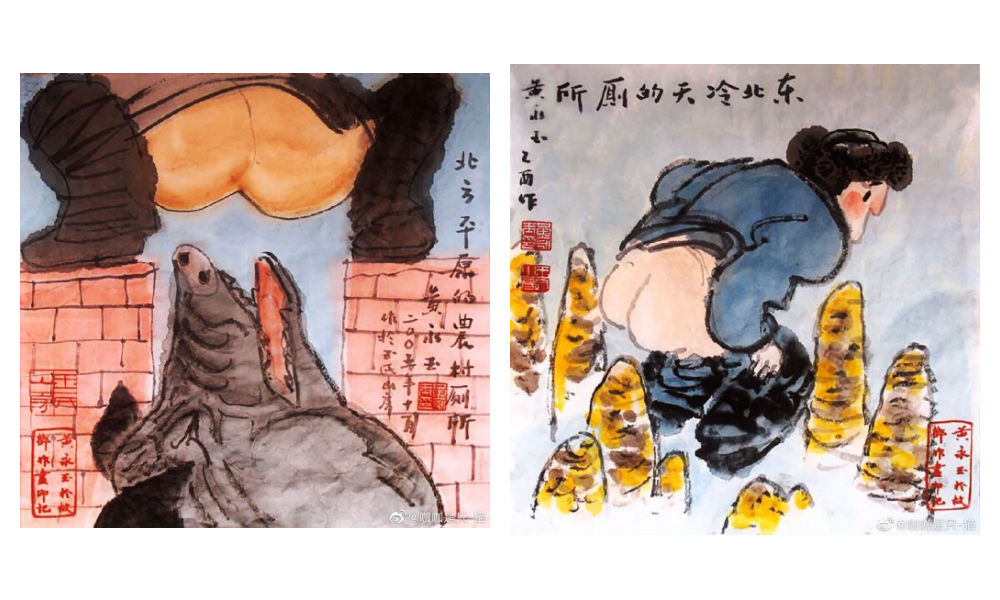
Old age did not hold him back. At the age of 70, his paintings sold for millions. When he was in his eighties, he was featured on the cover of Esquire (时尚先生) magazine.
At the age of 82, he stirred controversy in Hong Kong with his “Adam and Eve” sculpture featuring male and female genitalia, leading to complaints from some viewers. When confronted with the backlash, Huang answered, “I just wanted to have a taste of being sued, and see how the government would react” (Ora Ora).
I'm guessing the 98-year-old Huang loved the controversy. When confronted with backlash for his sculpture featuring male and female genitalia in 2007 Hong Kong, Huang answered, "I just wanted to have a taste of being sued, and see how the government would react." pic.twitter.com/kG0MVVM4SN
— Manya Koetse (@manyapan) June 15, 2023
In his nineties, he started driving a Ferrari. He owned mansions in his hometown in Hunan, in Beijing, in Hong Kong, and in Italy – all designed by himself (Chen 2019).
Huang kept working and creating until the end of his life. “It’s good to work diligently. Your work may be meaningful. Maybe it won’t be. Don’t insist on life being particularly meaningful. If it’s happy and interesting, then that’s great enough.”

“Hometown Scenery” or rather “Hunan Scenery” (湘西风景) by Huang.
Huang did not dread the end of his life.
“My old friends have all died, I’m the only one left,” he said at the age of 95. He wrote his will early and decided he wanted a memorial service for himself before his final departure. “Quickly come praise me, while I’m still alive,” he said, envisioning himself reclining on a chair in the center of the room, “listening to how everyone applauds me” (CCTV, Sohu).
He stated: “I don’t fear death at all. I always joke that when I die, you should tickle me first and see if I’ll smile” (“对死我是一点也不畏惧,我开玩笑,我等死了之后先胳肢我一下,看我笑不笑”).
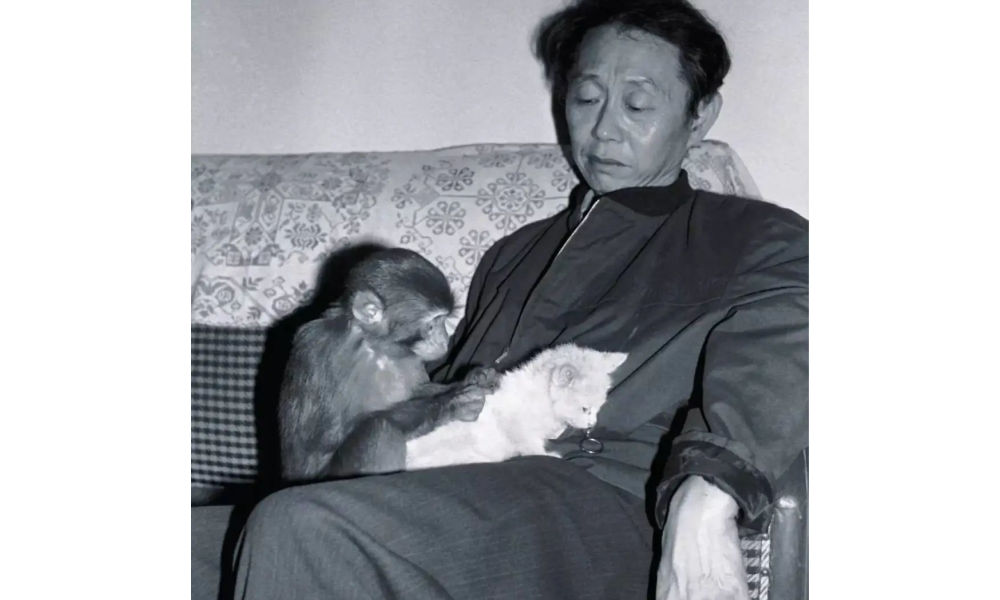
Huang with Yiwo (伊喔), the original model for the monkey stamp [Shanghai Observer].
Huang also was not sentimental about what should happen to his ashes. In a 2019 article in Guangming Daily, it was revealed that he suggested to his wife the idea of pouring his ashes into the toilet and flushing them away with the water.
However, his wife playfully retorted, saying, “No, that won’t do. Your life has been too challenging; you would clog the toilet.”
To this, Huang responded, “Then wrap my ashes into dumplings and let everyone [at the funeral] eat them, so you can tell them, ‘You’ve consumed Huang Yongyu’s ashes!'”
But she also opposed of that idea, saying that they would vomit and curse him forever.
Nevertheless, his wife expressed opposition to this idea, citing concerns that it would cause people to vomit and curse him indefinitely.
In response, Huang declared, “Then let’s forget about my ashes. If you miss me after I’m gone, just look up at the sky and the clouds.” Eventually, his wife would pass away before him, in 2020, at the age of 98, having spent 77 years together with Huang.
Huang will surely be missed. Not just by the loved ones he leaves behind, but also by millions of his fans and admirers in China and beyond.
“We will cherish your memory, Mr. Huang,” one Weibo blogger wrote. Others honor Huang by sharing some of his famous quotes, such as, “Sincerity is more important than skill, which is why birds will always sing better than humans” (“真挚比技巧重要,所以鸟总比人唱得好”).
Among thousands of other comments, another social media user bid farewell to Huang Yongyu: “Our fascinating Master has transcended. He is now a fascinating soul. We will fondly remember you.”
By Manya Koetse
Get the story behind the hashtag. Subscribe to What’s on Weibo here to receive our newsletter and get access to our latest articles:
References
Andrews, Julia Frances. 1994. Painters and Politics in the People’s Republic of China, 1949-1979. Berkley: University of California Press.
Baike. “Huang Yongyu 黄永玉.” Baidu Baike https://baike.baidu.com/item/%E9%BB%84%E6%B0%B8%E7%8E%89/1501951 [June 14, 2023].
CCTV. 2023. “Why Everyone Loves Huang Yongyu [为什么人人都爱黄永玉].” WeChat 央视网 June 14.
Chen Hongbiao 陈洪标. 2019. “Most Spicy Artist: Featured in a Magazine at 80, Flirting with Lin Qingxia at 91, Playing with Cars at 95, Wants Memorial Service While Still Alive [最骚画家:80岁上杂志,91岁撩林青霞,95岁玩车,活着想开追悼会].” Sohu/Guangming Daily March 16: https://www.sohu.com/a/301686701_819105 [June 15, 2023].
Hawks, Shelley Drake. 2017. The Art of Resistance Painting by Candlelight in Mao’s China. Seattle: University of Washington Press.
Matthysen, Mieke. 2021. Ignorance is Bliss: The Chinese Art of Not Knowing. Palgrave Macmillan.
Ora Ora. “HUANG YONGYU 黃永玉.” Ora Ora https://www.ora-ora.com/artists/103-huang-yongyu/ [June 15, 2023].
Spotted a mistake or want to add something? Please let us know in comments below or email us. First-time commenters, please be patient – we will have to manually approve your comment before it appears.
©2023 Whatsonweibo. All rights reserved. Do not reproduce our content without permission – you can contact us at info@whatsonweibo.com.
Subscribe

Weibo Watch: The Future is Here

“Bye Bye Biden”: Biden’s Many Nicknames in Chinese

Enjoying the ‘Sea’ in Beijing’s Ditan Park

A Triumph for “Comrade Trump”: Chinese Social Media Reactions to Trump Rally Shooting

Weibo Watch: Get Up, Stand Up

The Tragic Story of “Fat Cat”: How a Chinese Gamer’s Suicide Went Viral

“Old Bull Eating Young Grass”: 86-Year-Old Chinese Painter Fan Zeng Marries 36-Year-Old Xu Meng

A Brew of Controversy: Lu Xun and LELECHA’s ‘Smoky’ Oolong Tea

Singing Competition or Patriotic Fight? Hunan TV’s ‘Singer 2024’ Stirs Nationalistic Sentiments

Zara Dress Goes Viral in China for Resemblance to Haidilao Apron

Weibo Watch: The Battle for the Bottom Bed

About the “AI Chatbot Based on Xi Jinping” Story

China’s Intensified Social Media Propaganda: “Taiwan Must Return to Motherland”

Weibo Watch: Telling China’s Stories Wrong

Saying Goodbye to “Uncle Wang”: Wang Wenbin Becomes Chinese Ambassador to Cambodia
Get in touch
Would you like to become a contributor, or do you have any tips or suggestions? Get in touch here!
Popular Reads
-

 China Insight3 months ago
China Insight3 months agoThe Tragic Story of “Fat Cat”: How a Chinese Gamer’s Suicide Went Viral
-

 China Music4 months ago
China Music4 months agoThe Chinese Viral TikTok Song Explained (No, It’s Not About Samsung)
-

 China Digital10 months ago
China Digital10 months agoToo Sexy for Weibo? Online Discussions on the Concept of ‘Cābiān’
-

 China Arts & Entertainment12 months ago
China Arts & Entertainment12 months agoBehind 8 Billion Streams: Who is Dao Lang Cursing in the Chinese Hit Song ‘Luocha Kingdom’?




